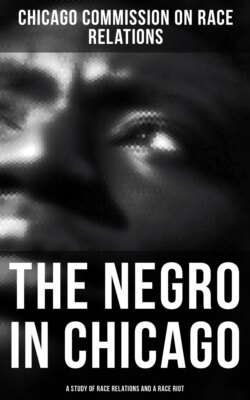Читать книгу The Negro in Chicago - A Study of Race Relations and a Race Riot - Chicago Commission on Race Relations - Страница 35
3. THE NORTH SIDE
ОглавлениеOn the North Side, Negroes live among foreign whites and near a residence area of wealthy Chicagoans. Their first appearance occasioned little notice or objection, since they were generally house servants living near their work. The largest numbers are to be found between Chicago Avenue and Division Street on North Wells, Franklin, and cross streets connecting them.
This neighborhood has experienced several complete changes in population. It was first occupied by Irish, then by Swedes, then by Italians. The present neighbors of Negroes are Italians. As indicated by the population changes, the neighborhood is old and run down, and the reasons given by Negroes for living there are low rents and proximity to the manufacturing plants where they work.
The Negroes there are renters, because the property, although undesirable for residence purposes, is valuable for business and too expensive for them to buy. The families are chiefly respectable, hard-working people. They have their own barber and tailor shops and similar business places. In social affairs they confine themselves largely to meetings, dances, and similar gatherings held exclusively for their own race. Formerly the second floor of a building on Division Street was frequently rented by the Negroes for church and other meetings, and dances. Recently they have found other meeting places, particularly for religious devotions. Some of their social gatherings and meetings take place at Seward Park.
A SAVINGS BANK IN THE NEGRO RESIDENCE AREA ON SATURDAY EVENING
CHILDREN AT WORK IN A COMMUNITY GARDEN
They are welcomed not only in Seward Park, one of the city's recreation centers, but in the settlements. At Eli Bates House, 621 West Elm Street, for example, there has been a club of Negro young men, and applications have been received for admission of Negro children to some classes. The head resident of the settlement reports, however, that it has not had much contact with the Negro group. A few Negro children come to the kindergarten; a group of Negro boys makes use of the gymnasium, and some neighboring Negro families have asked settlement residents for advice.
In this neighborhood friendly relations exist between the Sicilians, who predominate, and their Negro neighbors. Some Negroes live harmoniously in the same tenements with the Sicilians. Their children play together, and some Negro children have learned Sicilian phrases, so that they are able to deal with the Sicilian shopkeepers.
Elsewhere on the North Side the feeling between Italians and Negroes is not so cordial. During the riot of 1919, serious trouble was averted on the North Side through prompt and effective efforts by the police and members of the community. It was reported throughout the district that automobiles loaded with armed Negroes were on their way from the South Side to "shoot up the North Side." The Italians immediately armed themselves and began to shoot recklessly. They were eventually quieted by the police and others, and there was no retaliation of the Negroes.
Many Negroes who have purchased homes and lived on the North Side for years report little opposition. One family on North Wells Street has lived there since 1888 and now owns several valuable pieces of property. The man had no trouble in buying property, and the whites have always been friendly to them and to all Negroes in that section. Another Negro family on North Wells Street, where Negroes first lived, had no difficulty in getting their flat sixteen years ago. This block is occupied by whites and Negroes without friction.
Minor expressions of antagonism attended the moving in of some Negro families, but after several months the white neighbors accepted them and now are on good terms with them.
